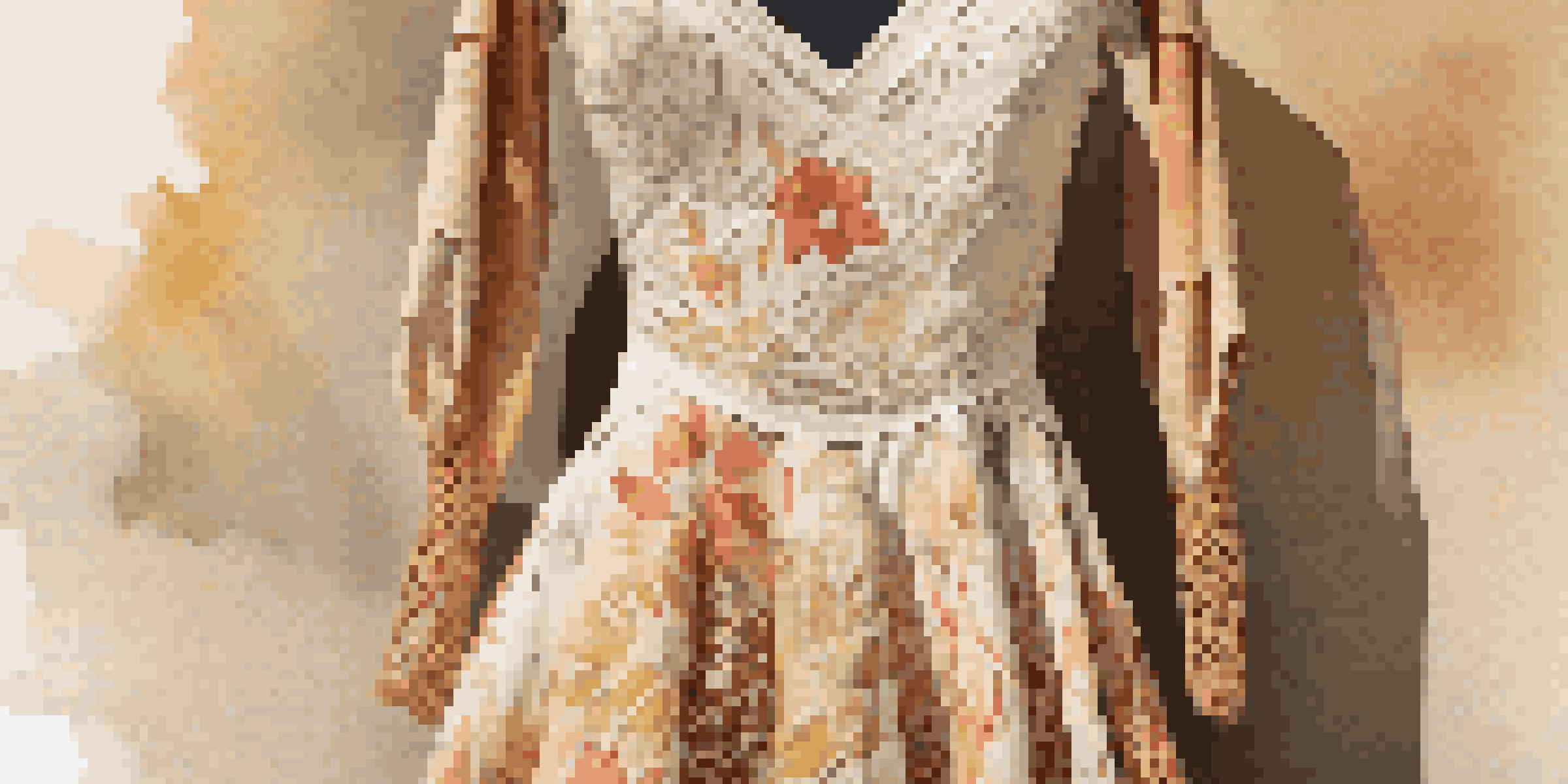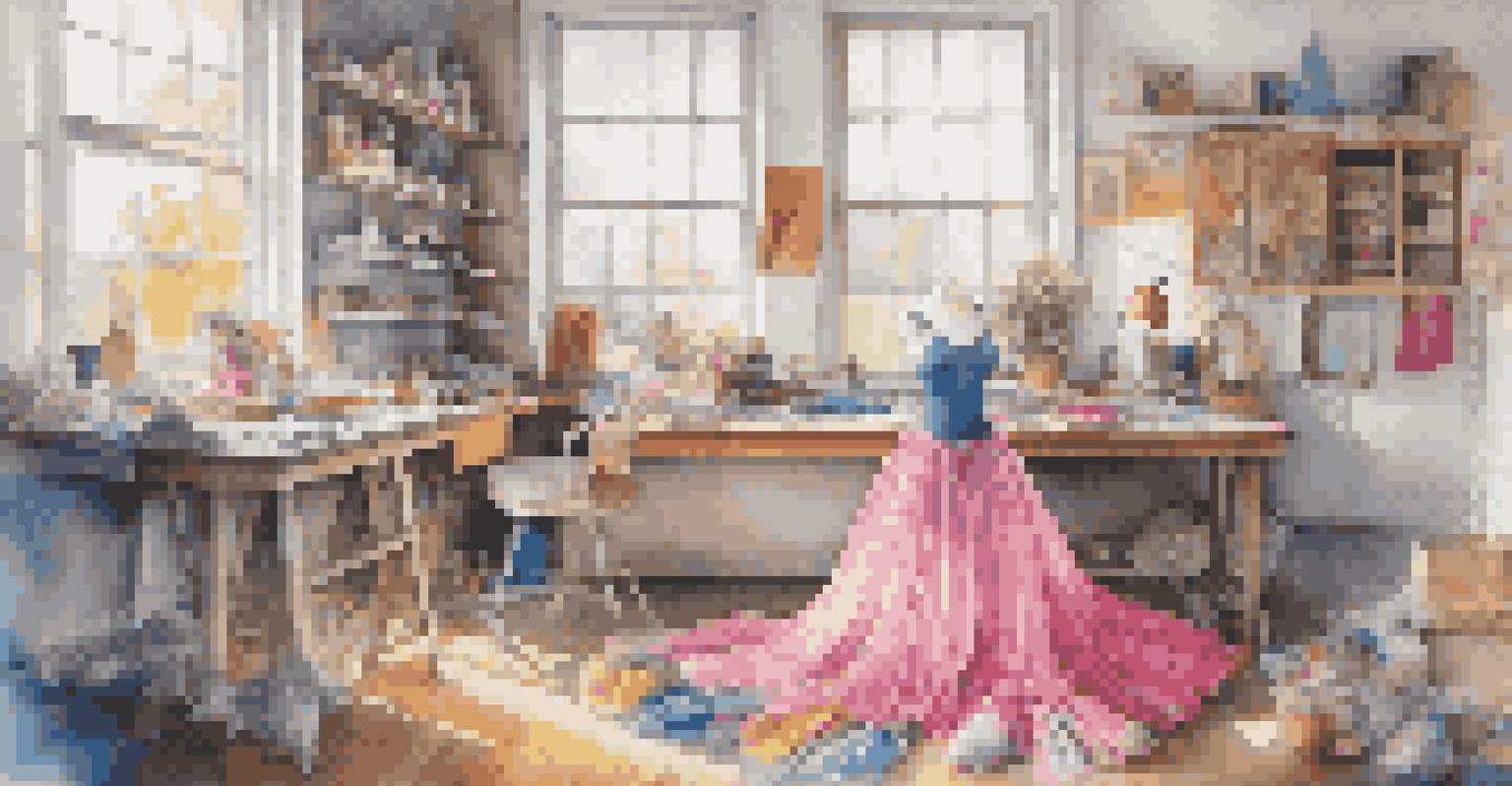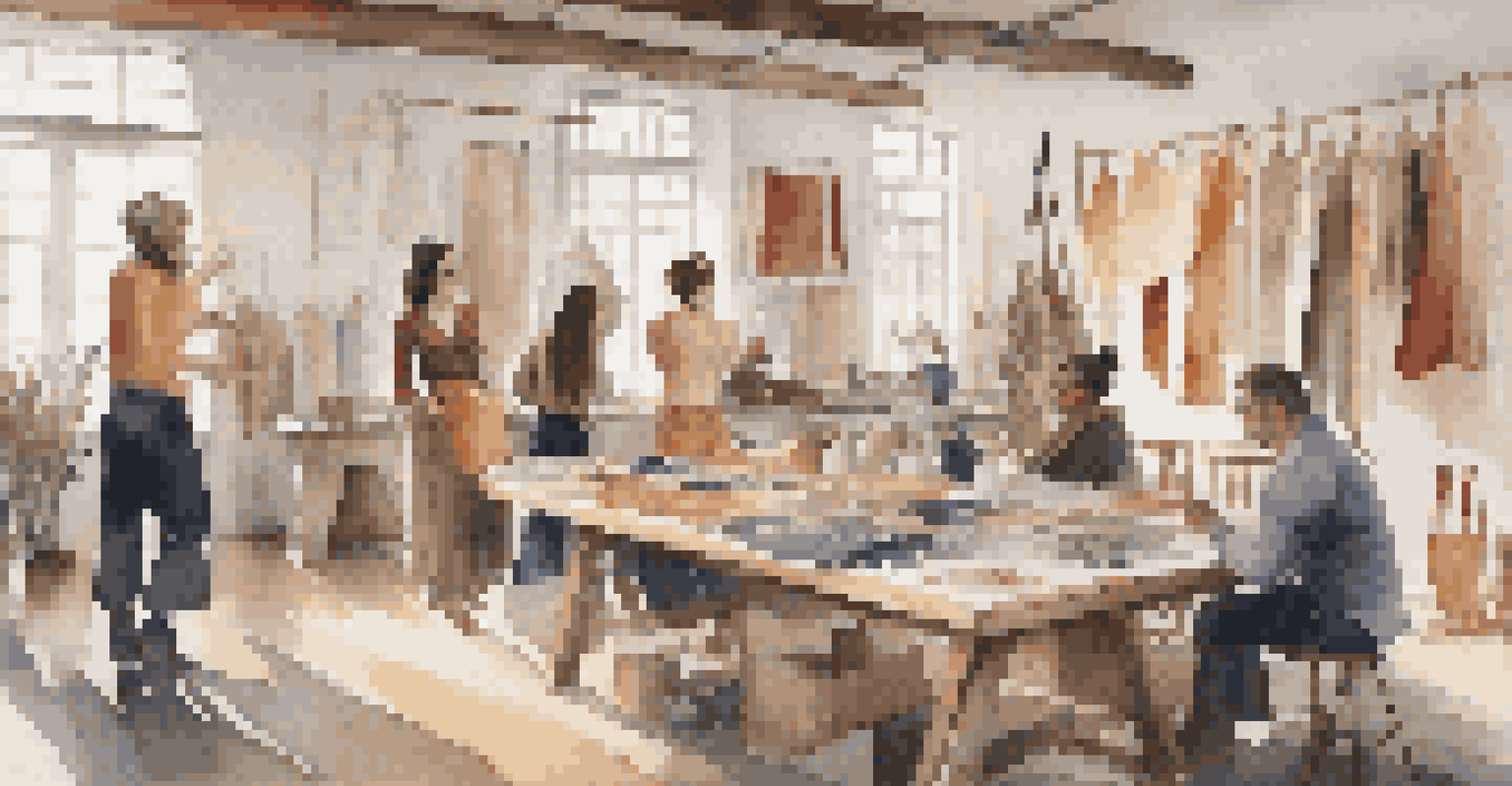Sustainable Practices in Dance Costume Design and Production

Understanding Sustainability in Dance Costumes
Sustainability in dance costume design refers to creating costumes that minimize environmental impact. This involves using eco-friendly materials, reducing waste, and ensuring ethical labor practices. Dancers and choreographers alike are becoming more aware of how their choices influence the planet's health, prompting a shift towards greener practices.
The greatest threat to our planet is the belief that someone else will save it.
For instance, choosing organic cotton or recycled fabrics can drastically lower the carbon footprint of a costume. By fostering a connection to the materials used, designers can create costumes that not only look beautiful but also tell a story of sustainability. This approach encourages a deeper appreciation of the artistry involved in dance.
Ultimately, understanding sustainability in dance costumes is about making informed choices that honor both the art form and the environment. As the industry evolves, more artists are embracing this philosophy, leading to innovative designs that reflect a commitment to a healthier planet.
Choosing Eco-Friendly Materials for Costumes
Selecting the right materials is crucial for sustainable dance costumes. Eco-friendly options include organic textiles, bamboo, and even repurposed fabrics from previous shows. These materials not only reduce environmental harm but also add unique textures and colors to costume designs.

For example, using recycled polyester made from plastic bottles can create stunning costumes while keeping waste out of landfills. Additionally, natural dyes derived from plants can bring vibrant hues to garments without using harmful chemicals. By making these choices, costume designers can significantly contribute to a more sustainable fashion ecosystem.
Embrace Eco-Friendly Materials
Using sustainable materials like organic textiles and recycled fabrics can significantly reduce the environmental impact of dance costumes.
As the demand for eco-friendly options grows, more suppliers are offering sustainable materials, making it easier for designers to source responsibly. Embracing these alternatives not only enhances creativity but also aligns with a broader movement toward environmental stewardship in the arts.
Designing for Durability and Longevity
One key aspect of sustainable dance costume design is ensuring that costumes are durable and long-lasting. Costumes that are built to withstand the rigors of performance can be reused for multiple productions, reducing the need for constant replacements. This approach not only saves resources but also encourages dancers to connect with their costumes over time.
Sustainability is not just about the environment; it's about the future of humanity.
To achieve durability, designers can focus on high-quality stitching, reinforced seams, and versatile styles that can adapt to different themes or performances. Incorporating elements like removable accessories allows for easy updates without a complete redesign. This thoughtful design strategy ensures that costumes remain relevant and functional for years.
By prioritizing durability, the dance community can foster a culture of sustainability. Dancers and choreographers can view their costumes as investments, leading to a more responsible consumption pattern within the industry.
Upcycling and Repurposing Old Costumes
Upcycling is a fantastic way to breathe new life into old costumes while promoting sustainability. Instead of discarding outdated pieces, designers can creatively transform them into fresh designs. This not only reduces waste but also sparks innovation in design practices.
For example, an old tutu can be repurposed into a fashionable skirt or accessories, while sequins and embellishments can be salvaged for new creations. This practice encourages a mindset of resourcefulness and creativity, allowing artists to explore unique styles that tell a story of their own.
Focus on Durability and Longevity
Designing costumes for durability encourages reuse and fosters a culture of sustainability within the dance community.
Incorporating upcycling into costume design fosters a sense of community as dancers share their transformed pieces or even collaborate on projects. By celebrating the history of a costume through its new life, the dance community can embrace sustainability in a way that honors both tradition and innovation.
Collaborating with Local Artisans and Suppliers
Building relationships with local artisans and suppliers can greatly enhance sustainable practices in dance costume design. By sourcing materials and labor locally, designers can reduce transportation emissions and support their communities. This collaboration often leads to unique, handcrafted pieces that reflect the local culture and artistry.
Local artisans bring a wealth of knowledge and skills, allowing designers to experiment with traditional techniques and sustainable practices. For instance, working with a local dyer can yield beautiful, natural colors while minimizing environmental impact. This partnership not only strengthens the local economy but also enriches the overall design process.
Emphasizing local collaborations creates a sense of connection within the dance community. As artists share their stories and resources, they contribute to a thriving ecosystem dedicated to sustainability and creativity.
Educating Dancers on Sustainable Practices
Education plays a pivotal role in promoting sustainable practices among dancers. By raising awareness about the environmental impact of costume design, dancers can make informed choices that align with their values. Workshops, discussions, and resources centered on sustainability can empower performers to advocate for greener practices.
For instance, incorporating sustainability topics into dance classes can inspire young dancers to think critically about their costumes and their lifecycle. When dancers understand the importance of responsible choices, they become advocates for change within the industry, influencing designers and producers alike.
Collaborate with Local Artisans
Partnering with local artisans not only supports communities but also enhances the uniqueness and sustainability of costume designs.
By fostering a culture of sustainability through education, the dance community can collectively work towards a more environmentally conscious future. This commitment to learning and growth paves the way for a new generation of artists who prioritize both their art and the planet.
The Future of Sustainable Dance Costume Design
The future of sustainable dance costume design looks promising as more artists and organizations embrace eco-friendly practices. With advancements in technology and materials, the possibilities for sustainable designs continue to expand. This evolution not only enhances creativity but also promotes a culture of responsibility within the industry.
As more dancers and choreographers advocate for sustainable choices, the demand for eco-friendly costumes will likely increase. This shift can lead to a ripple effect, encouraging manufacturers to prioritize sustainable production methods. Ultimately, a future where sustainability is at the forefront of costume design will benefit both the art form and the environment.

By committing to sustainable practices, the dance community can set a powerful example for other art forms. As dancers take the lead in promoting sustainability, they can inspire change beyond the stage, proving that art can indeed be a vehicle for environmental awareness and action.